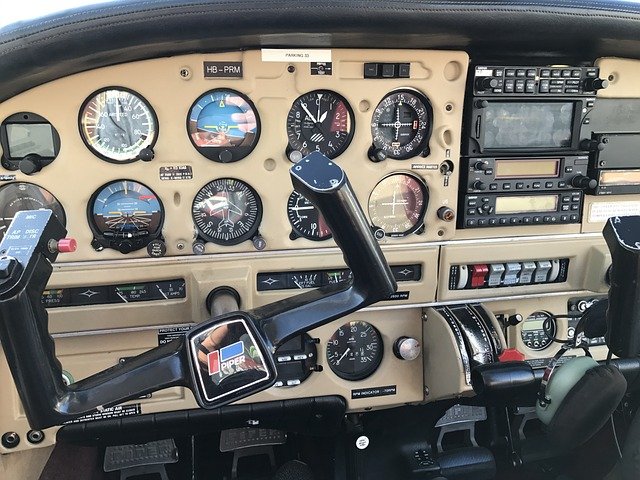Detailed Guide to Aviation Training and Full-Time Aviation Careers in the USA for 2025
Did you know 2025 offers structured aviation programs leading directly into airline and airport careers in the United States? Discover how modern training and cadet pathways can fast-track your journey from beginner to professional pilot or aviation specialist.

How Aviation Training Programs Support Careers in Airlines and Airports
Aviation training in the U.S. is delivered through accredited flight schools and airline cadet programs partnered with commercial carriers. These programs offer stepwise guidance from foundational flight instruction through advanced certifications, along with mentorship and operational readiness aligned with industry norms.
Typical components of aviation training programs in 2025 include:
- Structured Curriculum: Training usually follows a syllabus that progresses through Private Pilot License (PPL), Instrument Rating, Commercial Pilot License (CPL), and Certified Flight Instructor (CFI) certifications.
- Technology Integration: Students gain experience using aircraft equipped with modern avionics like the Garmin G1000 in Cessna 172s, flight simulators simulating weather conditions, and electronic flight bag apps such as ForeFlight.
- Time Commitment: Comprehensive programs often require full-time or intensive part-time engagement, including ground school and multiple weekly flight sessions.
These training routes are designed to obtain Federal Aviation Administration (FAA) certificates and to prepare students for careers in commercial airline operations or other aviation fields.
Airline Cadet Programs as Routes to Pilot Careers
Airline cadet programs offer structured training pathways linking flight schools and airlines, providing candidates a route into pilot employment.
Key Features of Airline Cadet Programs
- Entry from Limited or No Flight Experience: Some programs accept candidates without previous flight hours and deliver training from private pilot basics through CFI certification.
- Mentorship and Support: Candidates receive instruction and guidance from seasoned flight instructors and airline personnel to build flight hours and operational expertise.
- Potential Job Consideration: Certain programs may offer conditional job interviews or priority consideration with particular airlines upon successful completion.
- Financial Assistance: Some programs provide options such as loans or tuition aid to help cover training costs.
Examples of Airline Cadet Program Providers
- ATP Flight School’s Airline Career Pilot Program: This program focuses on training from zero flight time up to airline pilot qualification and maintains industry partnerships.
- United Aviate, Envoy Cadet Program, SkyWest Pilot Pathway, LIFT Academy, JetBlue Gateway Select: These programs collaborate with specific airlines or regional carriers and offer structured training aligned with their pilot standards.
Career Progression from Flight Instructor to Airline Pilot
After earning commercial pilot certifications, many graduates work as Certified Flight Instructors to accumulate the necessary 1,500 flight hours. This stage typically lasts between 18 and 24 months and provides both teaching and flight experience.
Career Levels and Corresponding Salary Ranges
- Flight Instructor Role: Salaries usually range from about $32,000 to $45,000 annually, providing flight time and instructional experience.
- Regional Airline First Officer: After meeting experience and certification requirements, pilots can obtain roles at regional airlines with starting salaries averaging around $80,000 per year, plus benefits.
- Further Advancement: Pilots may progress to major airlines and captain positions, where median salaries can increase considerably.
Salary estimates are approximate and may vary depending on airline, location, and other factors.
Accelerated Training Options and Financial Details
Some programs offer accelerated course choices to help students secure pilot certifications and prepare for aviation careers more efficiently:
- Florida Aviation Career Training’s Professional Aeronautics Certificate (PAC): This 21-month accelerated curriculum functions under FAR Part 61, combining simulator sessions and flight lessons with approximately 20 hours weekly.
- Use of Advanced Technology: AI-powered flight simulators and GPS avionics enhance training relevance to current aviation standards.
Training expenses may approach $87,875, covering tuition, flight hours, and materials. Payment plans and financing options, including private loans and scholarships, may be available to help manage costs.
Eligibility Requirements for Aviation Training Programs
Applicants to airline cadet and professional aviation programs typically must meet certain basic prerequisites:
- U.S. Citizenship or Legal Residency: Many formal programs require candidates to be U.S. citizens or permanent residents, following regulatory and airline hiring policies.
- FAA Medical Certification: At minimum, candidates should hold a Class 1 or Class 2 FAA medical certificate.
- Background Checks: Programs perform screening to ensure candidates comply with safety and security standards.
- Flight Experience: Some programs accept individuals without prior flight time; others may require existing pilot certifications.
- Selection Process: Usually involves an application, interviews, aptitude tests, and physical examinations.
International students not meeting citizenship requirements may access Part 141 flight schools offering comprehensive training without guaranteed airline employment links.
Career Training Opportunities Beyond Pilot Positions
The aviation sector in the U.S. also includes multiple career options besides piloting, such as airport operations, air traffic control, aviation maintenance, and airline customer service. Training programs for these roles focus on regulatory knowledge, technology skills, and operational competencies suited to airport and airline environments.
Prospective candidates for these roles often pursue specialized certificate courses, technical training, or degrees related to aviation management or aeronautical technology.
Summary
In 2025, the U.S. aviation industry provides well-defined, technology-supported training pathways for those interested in commercial pilot careers and other aviation professions. Airline cadet programs offer structured routes to pilot employment, while flight schools present entry points with various training schedules. Prospective students are encouraged to review eligibility criteria, program designs, and career goals carefully to choose suitable training programs aligned with their ambitions.
Sources
- ATP Flight School Airline Career Pilot Program
- Top Airline Cadet Programs in the USA – 2025 Guide
- Florida Aviation Career Training – Career Training
Disclaimer: All content, including text, graphics, images and information, contained on or available through this web site is for general information purposes only. The information and materials contained in these pages and the terms, conditions and descriptions that appear, are subject to change without notice.




